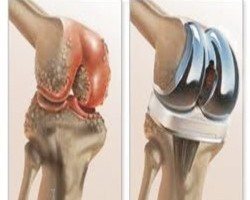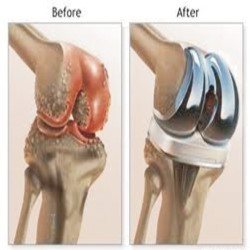Hospital for Special Surgery

The hospital business model is broken – here’s who’s getting it right.
In the heart of Manhattan, there sits a hospital that churns out tens of thousands of life-altering procedures every year. Patients with new hips and knees roll out of the operating rooms like widgets and gizmos roll of the assembly line at some of the most efficient factories in the world. This is the Hospital for Special Surgery, the nation’s oldest orthopedic specialty hospital, which performs 29,000 surgeries annually – that’s an average of 79 per day and 365 by its average surgeon in a given year!1 Recently ranked #1 in Orthopedics by US News and World Report 2, HSS is achieving its mission of “helping patients move better with less pain”1 through effectively driving alignment between its business and operating models.
They’re putting this stuff inside of your leg.. Don’t you want it done right?!
Let’s get down to business..
The business model of the majority of our country’s hospitals is broken. These general hospitals aim to be everything to everybody, and in the process lose out on many of the gains in efficiency and effectiveness that we would expect from modern medicine, not to mention drive up the costs! This is because these general hospitals are actually trying to house two competing business models simultaneously:
- Job shops or “Solution Shops” 3: Doctors working independently or in teams come up with solutions unique to each patient. Their process is different every time, and it needs to be. At the outset, they aren’t able to guarantee a correct diagnosis or recommend a procedure so their services must be paid for on a fee-for-service basis.
- Value-Adding Process (VAP)3 businesses: Once the problem is known definitively, doctors perform relatively standardized procedures and can be paid for predictable outcomes.
HSS is different – this hospital has chosen a focused VAP business model centered on hip and knee replacement surgery. By separating this defined process from the solution shop activities, HSS is able to provide top quality care without the high complexity and high overhead associated with a traditional hospital business model.
Time to operate
When it comes to its operating model, HSS focuses on doing one thing and doing it really well. Doing the same thing over and over creates surgeons who are truly experts in their field. This is enabled by the extremely high volume of surgeries that HSS is able to perform, ensuring that they see it all. The number of joint replacement surgeries performed by HSS is the highest in the world – more than double the next highest hospital, and more than 22 times the national average for all other hospitals!1 This unmatched scale drives process efficiency up and variability down, so that the average surgery takes significantly less time than at competitors (about 1.5 hours)1. This increased cycle time significantly lowers the risk of dangerous and costly infections and other complications.
HSS’ competitive advantage is further sustained through its use of Comprehensive Care Pathways, essentially standard operating procedures (no pun intended!), for defined patient conditions and types of surgeries1. This leads to less variability, improved quality and better patient care. In the hospital’s words, “surgeries that are rare at other hospitals are routine at HSS” 1. The hospital also heavily leverages data and has built out clinical registries with 84,000 patients enrolled which allow it to track patients with similar conditions and understand which factors influence improved outcomes1.
Primed for performance
This focused business model and streamlined operating model have translated into true differentiation in orthopedic surgery. HSS has the lowest infection rate in the state of New York and a significantly lower readmissions rate than the national average for similar procedures1. Patient satisfaction has consistently ranked in the 99th percentile, attracting patients from all over the world to have their procedures done at HSS1.
Most general hospitals have historically relied on fee-for-service payment models due to their entanglement of the solution shop and VAP business models. With all of the pressure to cut costs and improve quality in today’s health care system, there has been an increasing trend toward value and outcome-based payment models instead. This means that hospitals receive one set price for a procedure, like a joint replacement, and are expected to deliver a stated outcome. Any complications that arise or inefficiencies created along the way will be at the expense of the hospital. Thanks to the high performance gained through alignment between its business model and operating model, HSS is extremely well-positioned to win in this environment and ride the value-based payment wave into the future.
Sources:
1 Hospital for Special Surgery, “About Us”, https://www.hss.edu/about.asp.
2 U.S. News and World Report, ”U.S. News Best Hospitals 2015-16”, http://health.usnews.com/best-hospitals/rankings.
3 Christensen, C., Grossman, J. & Hwang, J. (2009). The Innovator’s Prescription. New York, NY: McGraw Hill.






As someone who got surgery at HSS (shoulder labrum repair), I can attest to its excellence as a hospital. I think its interesting that their low infection rates and high low cycle time can be attributed to limiting doctors to one specific surgery so that they become experts. While we’ve seen a number of cases where similar approaches have been taken (highly specialized tasks for workers to improve throughput and reduce error rates), a potential downside has always been worker boredom. When this technique is applied to highly qualified and intellectual surgeons, can the same thing be said? Does HSS ever allow doctors to “rotate” to a new surgery to alleviate boredom as Wang did with his workers at BYD?
Superb job breaking down The Hospital for Special Surgery through the lens of the TOM class. This post, as well as our early case on narayana hrudayalaya highlight an interesting operating model that can be applied to surgery. As you point out above, HSS has done a good job outsourcing the diagnosis process to other institutions, allowing them to focus on cranking out high quality / high rate operations. I’m curious if this process can be applied to other areas of medicine. For instance, can cancer centers benefit from studying the HSS model? Or is there too much heterogenity in the pathology, diagnosis, treatment, and follow-up care for these patients and this disease?
Another interesting topic of discussion would be HSS’s opportunities for growth? Should they leverage their operating model by building additional capacity in New York? Should they export the model to other locations? Or should they continue to optimize their processes, improve outcomes, and focus on excellence in their current operations?
Overall very interesting post and effective model for the surgery field.
Meghan, your post does a great job highlighting the way HSS has managed to achieve excellent results and stay ahead of the competition. As Adam points out, I wonder to what extent their processes can be rolled out to other hospitals. HSS certainly benefits from its narrow scope, which allows them to standardize more procedures since they have a high volume of fewer surgeries and services than a general hospital. Do see applications to other types of medical facilities or departments? Adam points out cancer centers, which is an interesting idea, but I would argue that there is actually more variability across cancers in terms of how they are diagnosed, treated and monitored with some requiring surgery, some requiring complex transfusions, than across orthopedic specialties and surgeries.
I was also really intrigued to see that HSS uses integrated care pathways to distinguish themselves, since this has become a hot topic in surgery departments across the country. While HSS isn’t the only hospital using pathways, I think that they are really ahead of the curve to combine pathways with a patient database so that they have access to a reliable set of patient outcomes. I hope other hospitals follow suit!